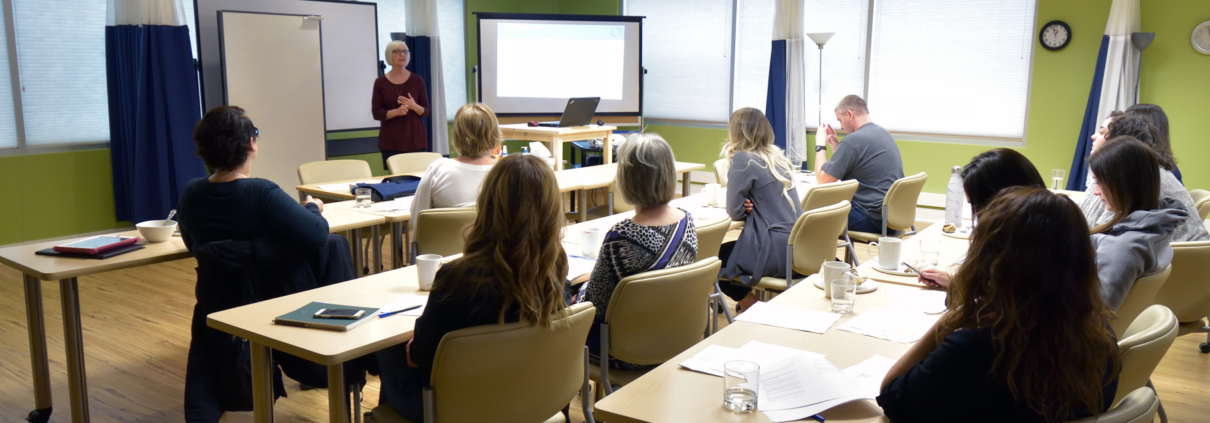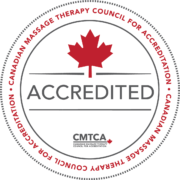Mature students equal mature therapists: Why older massage students thrive at Vicars School
This 3-part blog series is all about the advantages and challenges of starting a massage therapy career later in life. We’ll find out why it’s such an attractive career for people in their forties, fifties, and beyond and the special skills that mature students bring to the classroom. We’ll also feature the stories of some special Vicars graduates and current students who came to massage therapy as a second career.
Linda McGeachy knows what it takes to be a successful massage therapist. After all, she’s been an RMT for almost 30 years, a massage therapy educator for 25, and is currently the curriculum director at Vicars School.
“You have to like people a lot, and be able to listen well in order to decide what’s going to work best for that person,” she says. “You need to be empathetic, but also maintain the proper boundaries that are going to keep you effective. It’s about being open, well-rounded, and curious.”
It may come as a surprise to some people that her list didn’t include “young and well-muscled.” One of the most common misconceptions about massage therapy is that it’s a young person’s career.
But nothing could be further from the truth: it’s possible to be an effective and successful RMT no matter how old you are or when you start your career. We have more than 20 years’ worth of graduates to prove it!
In fact, starting a massage therapy career a little bit later in life can actually be an advantage.
“When you go back to school later in life, you know what you want and you’re not afraid to work for it. You are often more focused on your goals than you were when you were younger,” says the school’s founder Maryhelen Vicars. “You know yourself better, and that makes you a better student and a better massage therapist.”
Maryhelen speaks from experience: she went back to school at age 48 to train for a new career as an RMT. She had spent 25 years as a journalist, writer, and editor. She had extensive experience developing educational materials for adults, but she hadn’t been a student herself since her early 20s.
When she had the opportunity to create a new type of massage school a couple of years later, she had the needs of mature learners solidly in mind. Students would be treated like adults, and always with respect, she declared. The first consideration in any decision made by the school about curriculum or policy would be how it would affect the students.
Those promises still stand and are at the core of how the school operates today, she says. The result is a combination of a comprehensive, treatment-focused massage curriculum and a blended-learning schedule that allows students to balance school with their other responsibilities. Because mature students always have other responsibilities.
The guiding principles may have stayed the same for more than 20 years, but the curriculum and how it is delivered has definitely evolved. Linda works hard to make sure that Vicars is at the cutting edge of massage therapy education, from incorporating the latest research to using the best online learning tools. Don’t just take our word for it: Vicars is accredited by the CMTCA and an MTAA Approved Program).
The program attracts students at all stages of life but is especially popular with students in their mid-30s and beyond: people who are ready to leave their old career and make a new start, parents who can finally go back to school now that their children are old enough, and even retirees who want a flexible part-time vocation after decades of working 9-5.
Because they’re a part of a program that’s set up for their success, mature students at Vicars can let their strengths shine through.
“Mature students have experience managing family and career responsibilities,” Linda explains. “That’s very important for good time management.”
Mature students can also bring their broad life experience to bear when it comes to short- and long-term treatment planning.
“Each client has a different story and so many things can affect their wellbeing,” Linda says. “When the therapist can understand a person’s life situation because of their own experience, that puts the therapist in a better place.
She uses the example of chronic pain management, an area of growing interest in an aging population. In pain management, the emphasis is on techniques to stimulate the nervous system’s pathways, rather than those used to manipulate muscles. Different approaches are also required to understand chronic pain clients.
“The term ‘biopsychosocial’ is used to describe hearing and treating the whole person, rather than just focusing on specific injuries or complaints in isolation,” she says. “Older therapists with their life experience and, in some cases even their own chronic pain, can understand a person’s life situation better than a younger person who might be just starting to understand that.”
Take the next step on your career journey by signing up for an online or in-person open house event!




